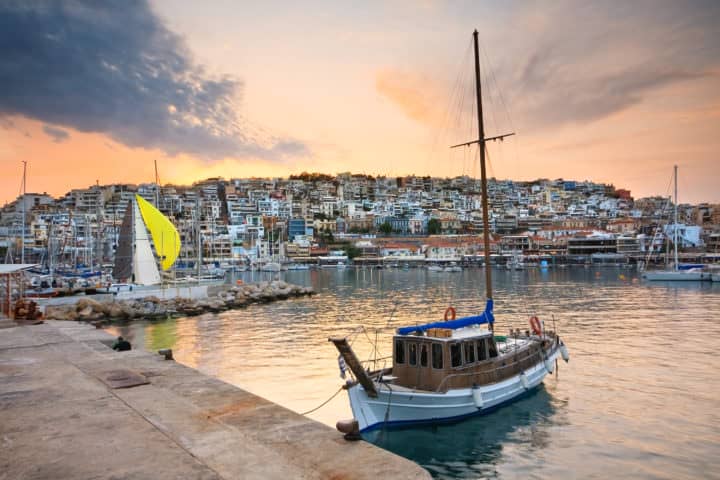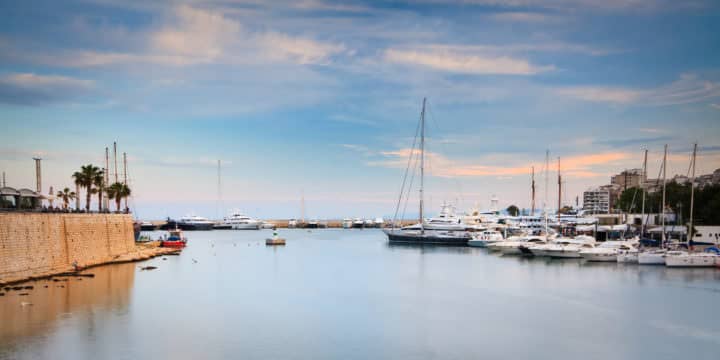 Piraeus is a Greek settlement whose name roughly translates as “the place over the passage” and is located about thirty minutes away from Athens. The ancient port of Piraeus was located in roughly the same spot, but there are portions of Piraeus that might still be underwater.
Piraeus is a Greek settlement whose name roughly translates as “the place over the passage” and is located about thirty minutes away from Athens. The ancient port of Piraeus was located in roughly the same spot, but there are portions of Piraeus that might still be underwater.
In fact, many of these underwater areas have been excavated, but the belief is that there still may be more. For example, the ancient ship sheds that housed portions of the ancient Athenian Navy have been uncovered.
Difference Between Athens and Piraeus
Today, we may believe that Piraeus and Athens are extremely close to on another. It’s about only a thirty minute drive from the center of Athens to Piraeus. Back in Ancient Greece, however, the distance between Athens and Piraeus seemed much greater. It was located over an area that would flood in the rainy season and then dry out. Crossing the muddy terrain was often difficult. It is for this reason that Piraeus wasn’t fully developed until later on in Ancient Greek history.
Piraeus’s Ancient Greek History Begins
Although the area around Piraeus had been inhabited for some time, its importance didn’t pick up until it had been established for some time. In fact, it became relevant to the ancient Grecian economy as late as 6th century B.C. thanks to the three harbors located here, called Cantharus, Zea and Munichia. By the 5th century B.C. Piraeus’ aquatic merits became so prevalent that Athens began to use it as a naval base for the Athenian fleet, especially after the crucial role it played in the deployment of triremes during the Battle of Salamis in 480 B.C. In fact, this is where the Athenian navy was officially based out of, and maritime archaeologists have recently uncovered some of the ancient ship heads that once held the boats. This is now largely under water.
Piraeus Becomes a Fortified City
 After the Second Persian Invasion, Cantharus, Zea, and Munichia were fortified and served as bases for ship houses, known as “neosoikoi.” Fortification of the three Themistoclean Walls concluded in 471 B.C. and cemented Piraeus’ dominance in trade and naval might. The walls were further augmented by the Long Walls of Cimon and Pericles which also connected Piraeus to Athens.
After the Second Persian Invasion, Cantharus, Zea, and Munichia were fortified and served as bases for ship houses, known as “neosoikoi.” Fortification of the three Themistoclean Walls concluded in 471 B.C. and cemented Piraeus’ dominance in trade and naval might. The walls were further augmented by the Long Walls of Cimon and Pericles which also connected Piraeus to Athens.
Later on, Piraeus’s layout was completely renovated to match up with the “Hippodamian Plan” created by the architect, Hippodamus. Piraeus would continue to prosper from the safety that came from trading within such a fortified city until the dawn of the Peloponnesian War.
Piraeus and the Peloponnesian War
The Peloponnesian War saw the first attack against Piraeus since it had become a center of trade and the navy. Two years into the war, would mark the first instances of plague within the city. Come 404 B.C., Lysander’s Spartan fleet managed to blockade the city, forcing Athens to surrender, dismantling the Delian League and ending the war.
Piraeus soon joined Athens as a conquered city, losing its walls, the Athenian fleet and a good portion of the docked triremes and neosoikoi. The destruction of Piraeus’ defenses and infrastructure allowed Rhodes to prosper as people looked for a better defended settlement. A year later in 403, Munichia was the site of a battle between the Athenian general Thrasybulus and his Phylean exiles against the Thirty Tyrants of Athens. The subsequent Battle of Piraeus saw the exiles dispatched by the Spartans.
Sometime after democracy was returned to the region, Conon restored Piraeus’ walls in 393, founded structures dedicated to Aphrodite, Zeus and Athena and constructed the arsenal of Philon. Piraeus continued to enjoy reconstruction during the reign of Alexander the Great until the arrival of Rome’s Lucius Cornelis Sulla, who captured and decimated Piraeus in 86 B.C. Piraeus was eventually reduced to rubble in the late fourth century by Alaric I’s Goths. Piraeus would continually decline except for its occasional use by the Byzantine navy.
It’s true that Piraeus is still a thriving port today. However, its important to know about its ancient history so you can understand where it truly came from.
Source:

